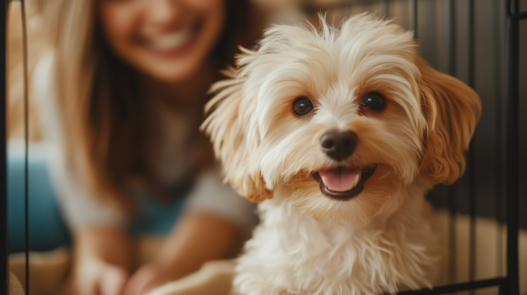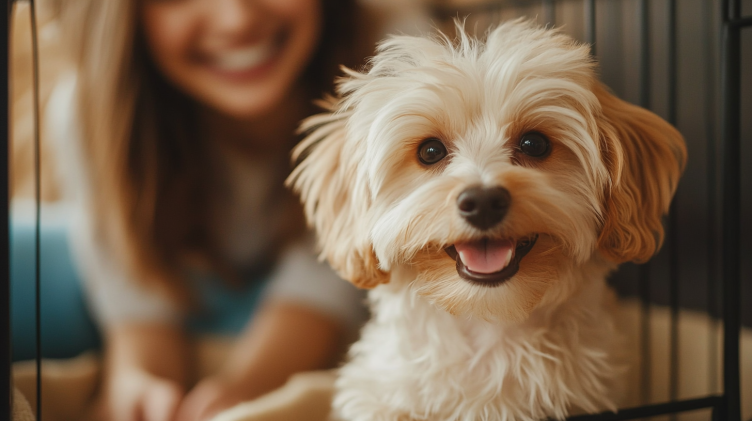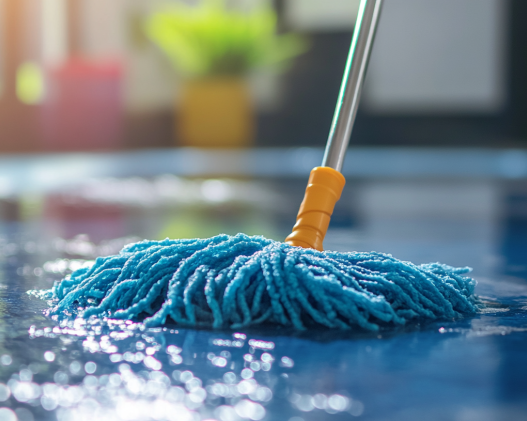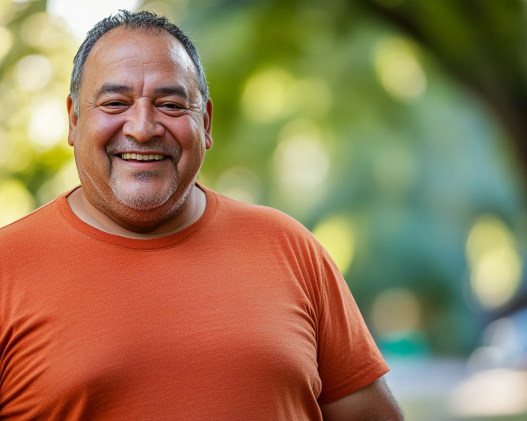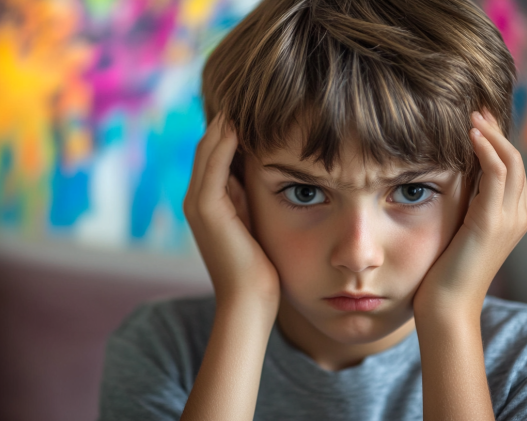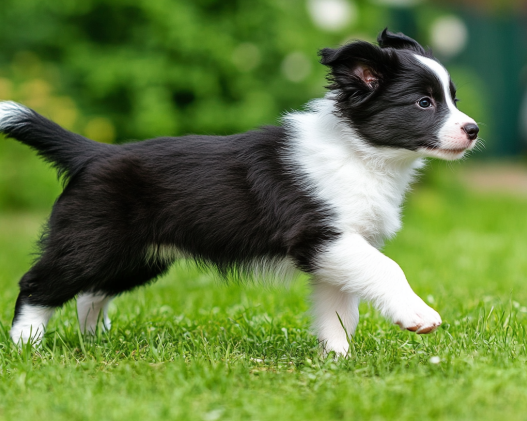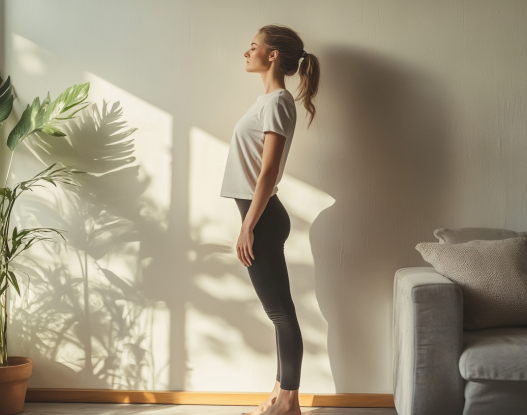When it comes to raising a dog, effective communication is key. Just like in any relationship, how we interact with our pets can make a huge difference. Many pet owners make the mistake of punishing their dogs with loud scolding or forceful methods when they don’t behave. But this can lead to frustration, fear, and even confusion in your puppy. The goal is to foster positive behaviors through gentle guidance, much like you would with a baby. After all, puppies are just like infants—they need care, patience, and a gentle hand to learn.
Training your dog effectively isn’t about harsh reprimands; it’s about positive reinforcement. Using rewards, praise, and encouragement can help motivate your dog and teach them good habits. Just like babies, puppies cannot understand harsh punishment, so kindness and consistency are essential for effective training.
Choosing the Right Crate for Your Dog’s Training
When it comes to crate training, size and comfort matter. Your dog doesn’t need a luxury penthouse, but they do need a space that’s just right for them. If the crate is too small, your puppy will feel cramped, but if it’s too large, they may use a corner as their bathroom, which defeats the purpose of crate training.
The ideal crate is one that is just big enough for your puppy to stand, turn around, and lay down comfortably. For easy cleaning and durability, choose a plastic crate over a metal one. Remember, crate training should never feel like punishment. Use the crate as a “safe space” where your puppy can rest and feel secure. You can add a comfortable blanket, some of your puppy’s favorite toys, and even a treat to encourage them to view the crate positively.
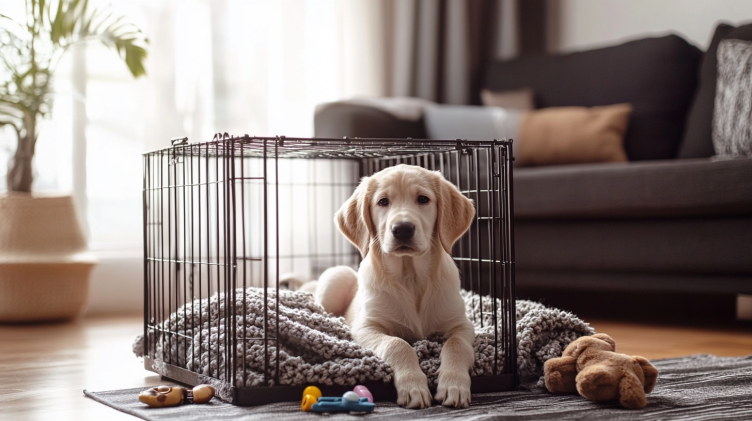
Crate Training for Potty Training
The crate is an invaluable tool for potty training. Start by designating a bathroom area in your home, preferably a small section of the room with some newspaper. If your dog starts sniffing around or circling the area, immediately guide them to their bathroom area. Over time, your puppy will associate this space with potty time.
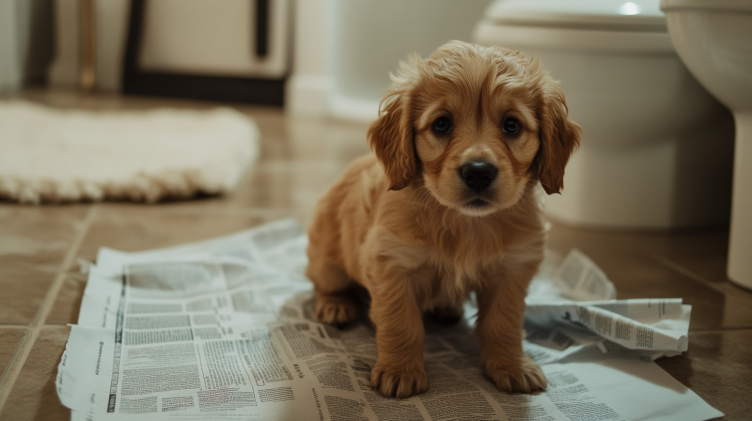
Golden Rules for Potty Training
- After waking up: Take your puppy out of the crate and immediately to their bathroom area.
- After meals: Take your puppy outside to potty right after meals.
- If your puppy makes a mess outside the designated area: Clean the mess immediately, and use a spray to eliminate the odor.
- Never punish accidents: Just like you wouldn’t punish a baby for an accident, avoid scolding your puppy. Use positive reinforcement to encourage proper potty habits.
- Before bed: Take your puppy out to potty one last time before crate time to avoid nighttime accidents.
- Praise after successful potty time: Give them a treat and lots of love to reinforce the good behavior.
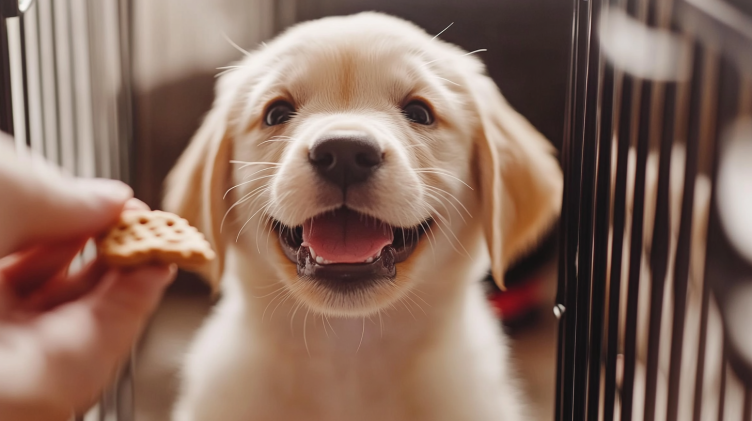
Setting Boundaries: Don’t Let Your Puppy Rule the House
It’s important to train your puppy not just in potty habits, but in other household rules as well. Crate training is one of the most common ways to establish boundaries, but it’s not just about potty training—it’s about creating structure.
You don’t want your puppy to rule the house from day one. It’s important to set limits on where your dog can go, what they can do, and when they can do it. Setting clear boundaries helps your dog understand what’s acceptable and what isn’t.
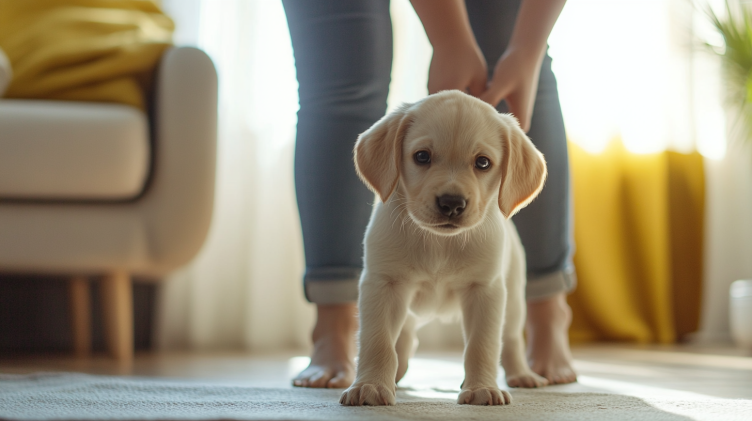
Training takes time and patience, and different breeds may learn at different rates. Consistency is key, and you should always give your puppy positive feedback when they meet your expectations.
The Importance of Positive Reinforcement
A well-trained dog is a happy dog, and a happy dog is a well-behaved dog. Positive reinforcement doesn’t just train your puppy to do what you want; it builds a strong bond between you and your pet. Through patience, consistency, and a gentle touch, your dog will learn to be respectful and loving—just like you’ve always hoped.
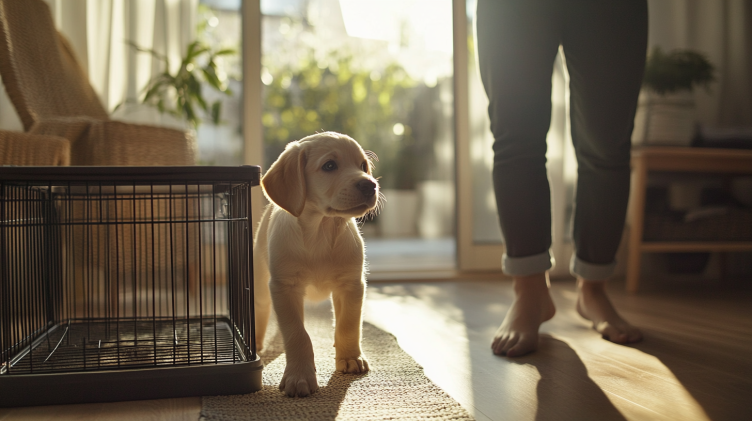
Conclusion
Training a dog can be a rewarding experience for both you and your pet. By following the golden rules of crate training, potty training, and setting boundaries, you can build a well-behaved dog who knows where it’s allowed to go, what it’s allowed to do, and when to do it. With patience, consistency, and a positive approach, your puppy will learn the right habits. Remember, your bond with your dog is built through trust and positive reinforcement, so take the time to enjoy the journey of training together.







